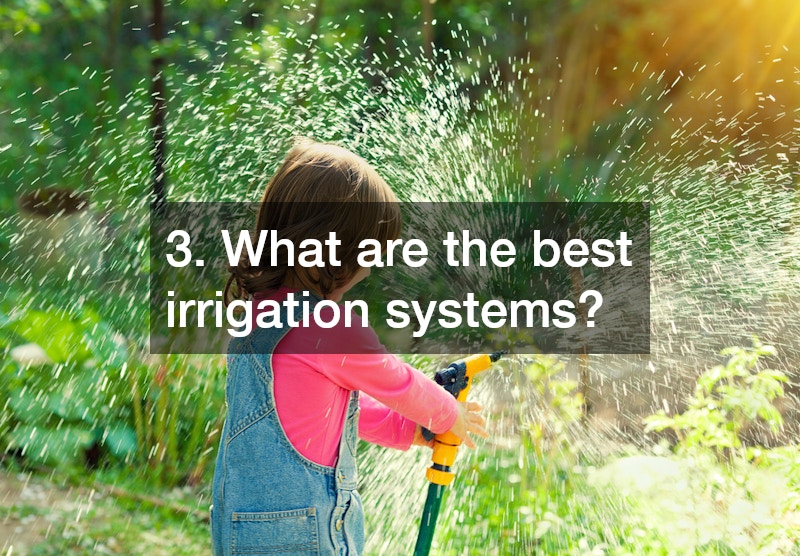It’s important to know the tools and supplies you will need before you begin your transformation of your outdoor space. Successful renovations not only improve the appearance of your property, but also increase its value. Knowing the essentials, from heavy equipment to specialized services such as concrete restoration and well drilling, can help streamline your renovation.
This guide will cover a wide range of essential tools and supplies for landscaping so you’re well-prepared for your next project. We will help you find the right equipment and supplies, whether you are looking to hire a concrete-cutting service or searching for options for forklift rentals. You’ll also find information on landscaping services, such as excavating and septic companies.
We will not only discuss the equipment but also the best practices for selecting and maintaining landscape tools and supplies in order to achieve your desired results. You will be able to create a checklist that includes all the items you need for the landscaping renovation. This will make the process feel more manageable and organized.
1. What are the essential landscaping tools?
The right tools are essential for any successful landscaping project. The essential landscaping tools are trowels and shovels. They all have specific uses in soil management and garden maintenance. Heavy equipment, like tractors and cranes can be purchased to expedite large projects. This makes them more affordable for homeowners.
Don’t forget to include quality hand tools in your arsenal when choosing landscaping equipment. Level gauges, for example, can ensure that your surfaces are flat and solid, which is important for hardscaping. The right tools can not only accelerate the process, but also reduce errors during construction.
Renting equipment such as forklifts can be useful in some situations when moving heavy materials. Consider hiring professional services for large projects or yards. It is a great way to ensure that your landscaping vision will be realized with expert results and efficiency.
2. What are the essential planting supplies?
It is important to have the right planting materials on hand when planning a landscaping project. A flourishing garden is built on the foundation of quality seeds, bulbs, and young plants. Select plants that will thrive in the local soil and climate conditions. This will ensure growth and longevity.
Soil amendment is also a crucial part of planting. Compost, peat-moss or fertilizers can improve soil fertility and structure. This will help to establish a solid foundation for your plants and allow them to thrive as you create your landscaping vision.
Don’t forget the safety equipment when you are preparing your planting materials. Hand gloves and kneepads can provide protection during planting sessions. This will allow you to enjoy the experience more comfortably. This will ensure that you enjoy and are effective throughout your entire landscaping project.
3. What are the best irrigation systems?

It is important to have an irrigation system in place, particularly in areas where rainfall may be inadequate. Many homeowners choose automatic irrigation systems such as sprinklers and drip systems because traditional hose systems can be time-consuming. Understanding irrigation options will help you save water while ensuring your plants get the perfect amount of moisture.
Water is efficiently used with drip irrigation systems because it delivers moisture directly to the roots of plants. This system can be beneficial for plants that are drought-resistant and reduce water consumption. You can also explore the options available from your local asphalt company. They may provide services to enhance landscaping.
A robust irrigation system will simplify maintenance and promote healthy plant growth. If you require assistance with designing and implementing an irrigation system that will meet your landscape’s requirements, consider hiring professionals. You can achieve a sustainable and effective watering system by collaborating with other services and septic companies.
4. What is the best mulching material?
The right mulching material can enhance your landscape and protect your plants. As they decompose, organic mulches such as wood chips and straw suppress weeds while also enriching the soil. When choosing the mulch for your landscaping, you should consider its color and durability.
Rubber or gravel mulches are ideal for certain settings because they last longer and don’t need to be replaced. These mulches can help control soil temperatures and moisture, which is beneficial to your plants. It is possible that working with an asphalt company can provide you with unique materials for your landscape.
It’s important to consider both the function and the design of your mulch before you choose it. Remember that mulching your landscape can enhance its visual appeal. The right mulch is not only important for your plants’ health, but it also enhances their beauty.
5. What are the construction materials needed for hardscaping?
Hardscaping is a solid element in landscaping, such as walkways, patios, and retaining walls. For durable and beautiful outdoor spaces, it is important to use quality construction materials like pavers, bricks, and stones. Choose your materials based on what style you are aiming for and the climate in your area.
Concrete is also used in hardscaping. If you are working with an existing structure, you should consider reputable concrete restoration service. Installation and finishing of hardscaping will enhance their appearance and ensure durability.
Remember that the heavy equipment available for sale can be used to transport these materials. Renting cranes or forklifts can be a great option if you are planning a big project. Consult with experts in excavation to ensure that your hardscaping is structurally sound and has a solid foundation.
6. What Lighting Options are Available for Landscaping?
Lighting can enhance your landscape and make it more usable after the sun goes down. There are many lighting options, all with different functions, including spotlights, pathway lights, and uplights. Consider energy-efficient lighting options such as LEDs to save money on electricity while still maintaining a welcoming ambiance.
Integrating smart lighting offers convenience and flexibility. Systems with smart controls or timers can be used to manage lighting more efficiently, depending on your preferences. Lighting is a key component to maximizing the utility of your landscape, whether it’s for safety or aesthetic appeal.
Lighting can help to create a safer environment. Install lighting along pathways to highlight interesting features such as trees or decorative stones and prevent accidents. Check how the septic company manages underground lines to avoid any interruptions.
7. How to Choose the Right Garden Structures
Structures like arbors, trellises, and fences can be used to enhance your garden. They not only support plants, but they also create visual interest. Consider what each structure is used for – to define space, support climbing plants, or add aesthetics. These structures’ materials should match the plants and architecture in your landscape.
Due to its traditional appeal and versatility, wood is a popular option for garden structures. Metal or vinyl are alternatives that offer greater durability and require less maintenance. Install the structure properly to prevent it from collapsing in storms or under heavy plant loads.
A defined design plan will allow your garden structures not to disrupt but rather enhance your landscaping. Working with professionals will help you choose the best structures for your landscape. These elements can be beautifully integrated into your outdoor space if you pay attention to the aesthetic flow.
8. What equipment is required for lawn care?

Each task in lawn care requires specific equipment. For regular mowing a reliable lawnmower will be essential. Trimmers and blowers are also necessary to remove debris and edges, and ensure a smooth finish. For optimal results and to prolong their life, it is important to maintain these machines regularly.
Consider investing in heavy equipment to help with lawn maintenance. Level gauges are also useful for leveling or reseeding the lawn. Consider hiring professionals to perform specialized tasks such as aeration and dethatching.
A regular monitoring of pests and disease is an important part of lawn maintenance. Additional treatments may be required. Proper watering and fertilization techniques will keep your grass vibrant and healthy, while also blending well with the surrounding plants. Your lawn can be a beautiful focal point in your outdoor space with the right knowledge and equipment.
9. What are the best practices for composting?
Composting, a natural process, transforms organic waste into soil rich in nutrients that will greatly enhance your landscaping project. Start by collecting kitchen scraps, yard debris, and other organic material. Compost of the highest quality is produced by maintaining a balance between green (nitrogen rich) and brown materials (carbon rich).
It should be damp, but not soggy. Regularly turning your compost allows air to circulate, which speeds up the breakdown of materials. Composting your landscape will also add nutrients to the soil, improve its structure and encourage healthy plant growth.
Composting can be a great way to reduce your kitchen waste and improve the soil in your garden. When you get more comfortable with composting, experiment with different materials and methods to see what works for you. Composting can produce remarkable results in your landscaping if you are patient and take care.
10. How to maintain your landscaping tools and supplies
Maintaining your landscaping tools properly will help them last longer and perform better throughout their lifetime. After each use, clean your tools to remove any dirt, sap, or rust. These can all degrade the quality of your tool over time. Check your equipment regularly for signs of damage or wear that could affect efficiency and safety.
Sharpening the blades of tools like pruners or lawnmowers can improve their cutting abilities and reduce effort during use. Storing your tools in an organized, dry area that is protected from the weather will extend their service life. Follow the recommended maintenance schedule for more complex machinery to keep it in good working order.
To maintain safety during landscaping projects, you should invest in protective equipment for your tools as well as yourself. To avoid accidents, familiarize yourself with the operating procedures of larger equipment like forklifts before renting it. These best practices will save you money and time while improving your landscaping experience.
Conclusion
Planning and understanding the tools and supplies necessary for a successful landscaping renovation is essential. You can make sure that your project is a success by investing in quality materials, renting heavy machinery, and consulting professionals. No matter if you are undertaking major renovations or making simple improvements, a beautiful and functional outdoor space is possible with the right knowledge and preparation.
Knowing what you can do to improve your landscape, from concrete restoration to asphalt services and cranes, will help you maximize its potential. This list is a good reminder that choosing landscaping materials carefully will help you create a lasting, attractive outdoor environment. Your landscaping project will be more rewarding and satisfying if you take the time to learn about these elements.